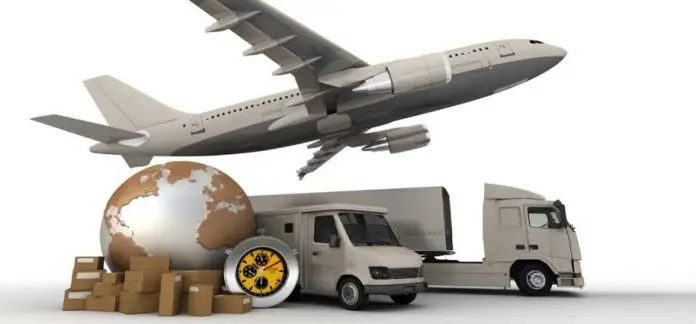
Content
Managing freight bill payment processes is a critical yet often overlooked aspect of supply chain management. With the increasing complexity of logistics operations, organizations face challenges such as processing errors, delays, miscalculations, and lack of visibility into payment data. These inefficiencies not only lead to financial discrepancies but also strain relationships with carriers and stakeholders.
Manual handling of freight invoices adds to the problem, consuming valuable time and resources while leaving room for human error. As businesses strive to improve efficiency, accuracy, and cost-effectiveness in their operations, automating freight bill payment processes emerges as a game-changing solution.
Automation brings order to the chaos, addressing pain points like data entry errors, invoice auditing bottlenecks, and compliance risks. In this blog, we’ll explore the top reasons why automating freight bill payment processes is not just a luxury but a necessity for businesses aiming to thrive in an increasingly demanding logistics ecosystem.
8 Key Benefits of Automating Your Freight Bill Payment Processes
Here are 8 key advantages of automating your freight bill payment processes:
1. Increased Efficiency and Time Savings
Automating freight bill payment processes eliminates the need for manual data entry and verification, significantly reducing the time spent on administrative tasks. By implementing an automated system, logistics teams can focus on strategic operations rather than mundane clerical work, improving overall productivity. This ensures that resources are used more effectively across the organization.
Additionally, automation accelerates the end-to-end payment process. Tasks like invoice processing, approvals, and payments are streamlined, allowing businesses to manage high volumes of freight bills without bottlenecks. The efficiency gained through automation ultimately translates to quicker responses to operational needs and reduced backlogs.
How Automation Helps Increase Efficiency and Save Time
- Eliminates Manual Tasks: Automation reduces repetitive data entry by automating invoice processing, allowing staff to focus on strategic logistics operations.
- Streamlined Workflows: Payment approvals, verifications, and processing are completed faster, cutting down operational delays and creating smoother workflows.
- Minimizes Delays: Eliminates manual backlogs, ensuring invoices and payments are processed promptly without unnecessary interruptions.
- Resource Optimization: Staff resources are reallocated from time-consuming tasks to more valuable and impactful logistics strategies.
- Improved Productivity: Automation enhances efficiency and accuracy, increasing output without increasing workforce demands or operational costs.
2. Enhanced Accuracy and Reduced Errors
Manual processes often lead to human errors, such as duplicate payments or incorrect entries, which can be costly and time-consuming to resolve. Automation ensures that data is consistently validated and processed according to pre-set rules, minimizing mistakes and discrepancies in freight bill management.
Automation also incorporates error-detection features that flag inconsistencies, such as mismatched rates or incomplete invoices, for review. By reducing errors, businesses can avoid costly disputes and improve financial accuracy, ultimately leading to better decision-making and resource allocation.
How Automation Reduces Errors and Improves Accuracy
- Error Detection: Automated systems identify and flag discrepancies in freight invoices and data entries before errors escalate.
- Rule-Based Processing: Automation follows pre-set rules, ensuring consistency and validation for accurate data handling.
- Avoids Costly Mistakes: Prevents issues like duplicate payments or billing errors that create financial and operational complications.
- Improves Data Reliability: Ensures all data is accurate, validated, and up-to-date across systems, reducing miscommunication.
- Simplifies Issue Resolution: Automated logs help trace and correct errors quickly, saving time on manual investigations.
3. Improved Cost Management and Visibility
Automated freight bill systems provide detailed insights into shipping costs, enabling companies to track expenses in real time. This visibility allows businesses to identify cost-saving opportunities and negotiate better terms with carriers based on historical data and spending trends.
Additionally, these systems centralize financial data, offering a comprehensive view of freight expenditures. This enhanced cost transparency aids in budget planning and ensures compliance with financial goals, helping businesses maintain control over their logistics spend.
How Automation Enhances Cost Management and Visibility
- Real-Time Cost Insights: Offers real-time data on freight expenses, enabling better financial tracking and planning.
- Identifies Cost Savings: Highlights inefficiencies and overspending opportunities to reduce unnecessary expenses.
- Centralizes Financial Data: Consolidates freight payment data in one place for easier access and reporting.
- Supports Budgeting: Provides detailed insights to align freight expenditures with business financial goals.
- Improves Transparency: Enhances visibility into freight costs for better decision-making and carrier negotiations.
4. Streamlined Auditing and Compliance
With automation, freight bill data is organized and stored systematically, simplifying the auditing process. Automated systems maintain detailed records of transactions, making it easier to verify payments and identify discrepancies during an audit.
Compliance with regulatory requirements is also improved through automation. Freight payment systems are often equipped to handle tax regulations, documentation, and industry standards, reducing the risk of penalties. This ensures businesses remain compliant without additional manual effort.
How Automation Streamlines Auditing and Compliance
- Organized Records: Stores and organizes freight payment data for easy retrieval during audits.
- Regulatory Compliance: Automatically integrates tax regulations and compliance standards into the payment process.
- Simplifies Audits: Reduces audit complexity by maintaining detailed and accurate transaction logs.
- Reduces Risk: Minimizes compliance penalties with accurate and consistent freight bill management.
- Improves Accountability: Creates a reliable record trail, enhancing accountability and transparency in financial processes.
5. Faster Payment Processing
Automated freight bill payment systems accelerate the payment cycle, ensuring that invoices are processed and paid promptly. Timely payments enhance cash flow management and reduce the risk of late fees or strained carrier relationships.
In addition to speed, automation eliminates delays caused by manual approvals or misrouted paperwork. This ensures that carriers receive payments on time, fostering trust and encouraging collaboration for future shipments.
How Automation Speeds Up Payment Processing
- Faster Approvals: Automates the approval process, reducing delays caused by manual intervention.
- Quicker Payments: Ensures timely payments to carriers, improving cash flow and avoiding late fees.
- Eliminates Paperwork Delays: Digital systems bypass traditional manual paperwork bottlenecks.
- Improves Payment Accuracy: Reduces errors that slow down payment cycles or require additional reviews.
- Encourages Carrier Trust: Promotes stronger relationships by consistently paying carriers on time.
6. Better Carrier Relationships
Prompt and accurate payments demonstrate professionalism and reliability, strengthening relationships with carriers. Automation ensures that payment processes are consistent and predictable, which can improve carrier satisfaction and loyalty.
Strong relationships with carriers can also lead to more favorable terms and better service. When carriers trust a business to pay efficiently, they are more likely to prioritize its shipments and offer competitive rates, creating a win-win scenario.
How Automation Strengthens Carrier Relationships
- On-Time Payments: Builds trust with carriers by ensuring consistent, timely payments for their services.
- Reduces Disputes: Automated accuracy eliminates billing conflicts, maintaining positive carrier relations.
- Improves Communication: Centralized data enhances transparency in transactions with carriers.
- Builds Loyalty: Reliability in payment processes fosters long-term partnerships with preferred carriers.
- Encourages Better Rates: Positive relationships can result in carriers offering competitive pricing.
7. Advanced Data Insights and Reporting
Automated systems generate detailed analytics and reports, offering actionable insights into shipping trends and costs. These data-driven insights help businesses make informed decisions, optimize logistics strategies, and improve overall performance.
The reporting features of automation tools also enable real-time monitoring of key performance indicators (KPIs). By analyzing these metrics, companies can identify inefficiencies and implement targeted improvements, ensuring continuous optimization of freight operations.
How Automation Delivers Advanced Data Insights and Reporting
- Real-Time Analytics: Provides up-to-date insights into freight trends and operational metrics.
- Actionable Insights: Helps businesses identify inefficiencies and areas for improvement based on comprehensive data.
- Customizable Reports: Generates tailored reports to meet specific operational needs and KPIs.
- Enhances Decision-Making: Empowers teams with data to optimize logistics strategies and cost structures.
- Supports Forecasting: Leverages historical data to predict future trends and plan effectively.
8. Scalability for Business Growth
Automation provides the scalability needed to handle increased freight volumes as businesses grow. Automated systems can manage larger workloads without requiring additional staff, ensuring that operations remain efficient even during periods of rapid expansion.
Moreover, scalable systems can integrate with other technologies, such as transportation management systems (TMS) and enterprise resource planning (ERP) tools. This integration allows businesses to build a cohesive logistics ecosystem, supporting long-term growth and success.
How Automation Enables Scalability for Business Growth
- Handles Larger Volumes: Easily processes increased freight transactions without additional staff.
- Integration Ready: Works seamlessly with existing systems like TMS and ERP for operational synergy.
- Maintains Efficiency: Ensures processes remain streamlined during periods of business expansion.
- Supports Flexibility: Adapts to evolving logistics needs and business demands.
- Reduces Costs: Scales operations without proportional increases in administrative overhead.
Conclusion
The future of freight bill payment is increasingly digitized and automated, driven by the complexities of managing high volumes of invoices, varying freight rates, and compliance with regulations. Manual processes often lead to errors, delayed payments, and operational inefficiencies. Third-party providers offer a streamlined approach by leveraging expertise, advanced technology, and automation to handle freight audit and payment services efficiently.
Invensis specializes in delivering comprehensive freight audit and payment services through cutting-edge software solutions. Our offerings include invoice validation, cost variance analysis, compliance checks, and customized reporting, ensuring accuracy and transparency. With our automated processes, businesses can minimize errors, reduce overhead costs, and improve cash flow management. Invensis also provides actionable insights to enhance decision-making and optimize supply chain operations.
Contact us today to streamline your freight audit and payment process!
Discover Our Full Range of Services
Click HereExplore the Industries We Serve
Click HereBlog Category
Related Articles

Find the leading accounting firms in Singapore trusted by businesses for audit, tax, and advisory services.
November 6, 2025
|

Explore the leading accounting firms in South Africa providing expert audit, tax, cloud accounting, and payroll services. Learn about their key features and unique offerings.
November 6, 2025
|

Explore what project accounting is, how it works, and why it’s essential for businesses. Understand key principles, revenue recognition methods, and best practices to improve your knowledge.
October 7, 2025
|
Services We Provide
Industries We Serve









.webp)